| IC 443 - The Jellyfish Nebula This nebula is most probably what is left of a supernova that occurred about 30,000 to 50,000 years ago. At its center is a neutron star that was formed when the stellar core collapsed. The Jellyfish Nebula is in the constellation Gemini (The Twins), and is about 5,000 light-years from Earth. Image processed by Ron Yelton, original data from Telescope Live |
The Horsehead and Flame Nebulae
(Barnard 33 and NGC 2024) This wide-field view contains both the Horsehead and Flame Nebulae. It shows a very small portion of the great Orion Molecular Cloud complex, which stretches from above Orion's head (Betelgeuse) to below his feet (Rigel). it was imaged in the HSO pallette. They both lie about 1375 light-years away. the Horsehead is a dark nebula while the Flame nebula is an emission nebula. Image processed by Ron Yelton, original data from Telescope Live |
Wide-field view of the region
around Deneb Deneb is a very bright star in the constellation Cygnus - The Swan, and represents its tail. Another notable star in Cygnus is Alberio, a colorful double star systen that is the head of the swan. Cygnus is also sometimes referred to as the Northern Cross. It is also part of an asterism known as the Summer Triangle, which is made up of Deneb, Altair and Vega. Its mass is about 20-25 solar masses which means that it will end up as a supernova. It is about 2600 light-years away. Image processed by Ron Yelton, original data from Telescope Live |
|
Location: IC Astronomy Observatory, Spain
Date: December 2023 Mount: Paramount MX+ Telescope: Takahashi FSQ-106ED (SPA-1) Camera: QHY600m CMOS @ -25c Exposure: SHO 49 x5 min Total: 4 hrs 5 min |
Location: IC Astronomy Observatory, Spain
Date: January 2024 Mount: Paramount MX+ Telescope: Takahashi FSQ-106ED (SPA-1) Camera: QHY600m CMOS @ -25c Exposure: SHO 189 x 5 min (HSO) Total: 13 hrs 15 min |
Location: IC Astronomy Observatory, Spain
Date: January 2024 Mount: Paramount MX+ Telescope: Takahashi FSQ-106ED (SPA-1) Camera: QHY600m CMOS @ -25c Exposure: SHO 63 x 5 min (HSO) Total: 5 hrs 15 min |
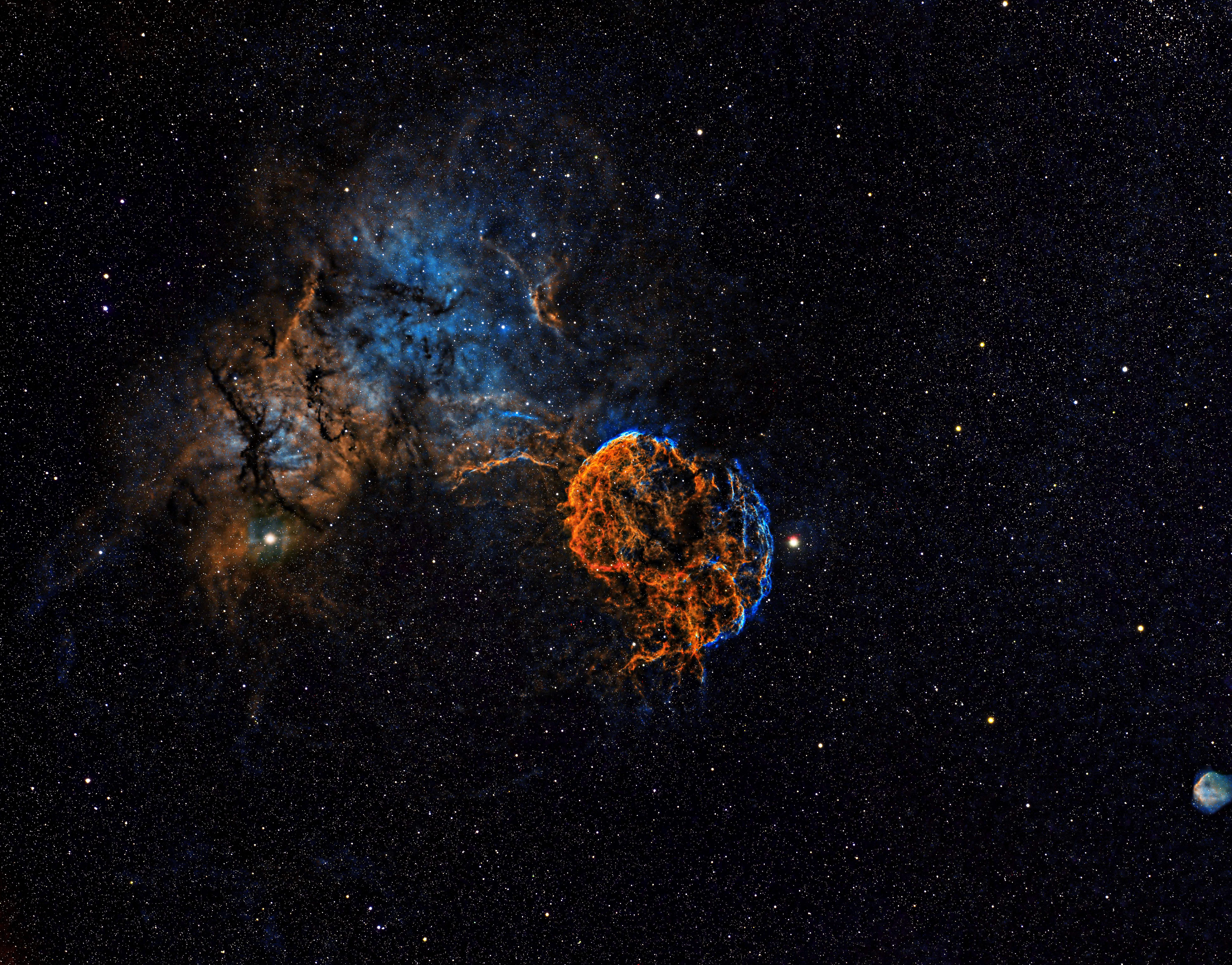 |
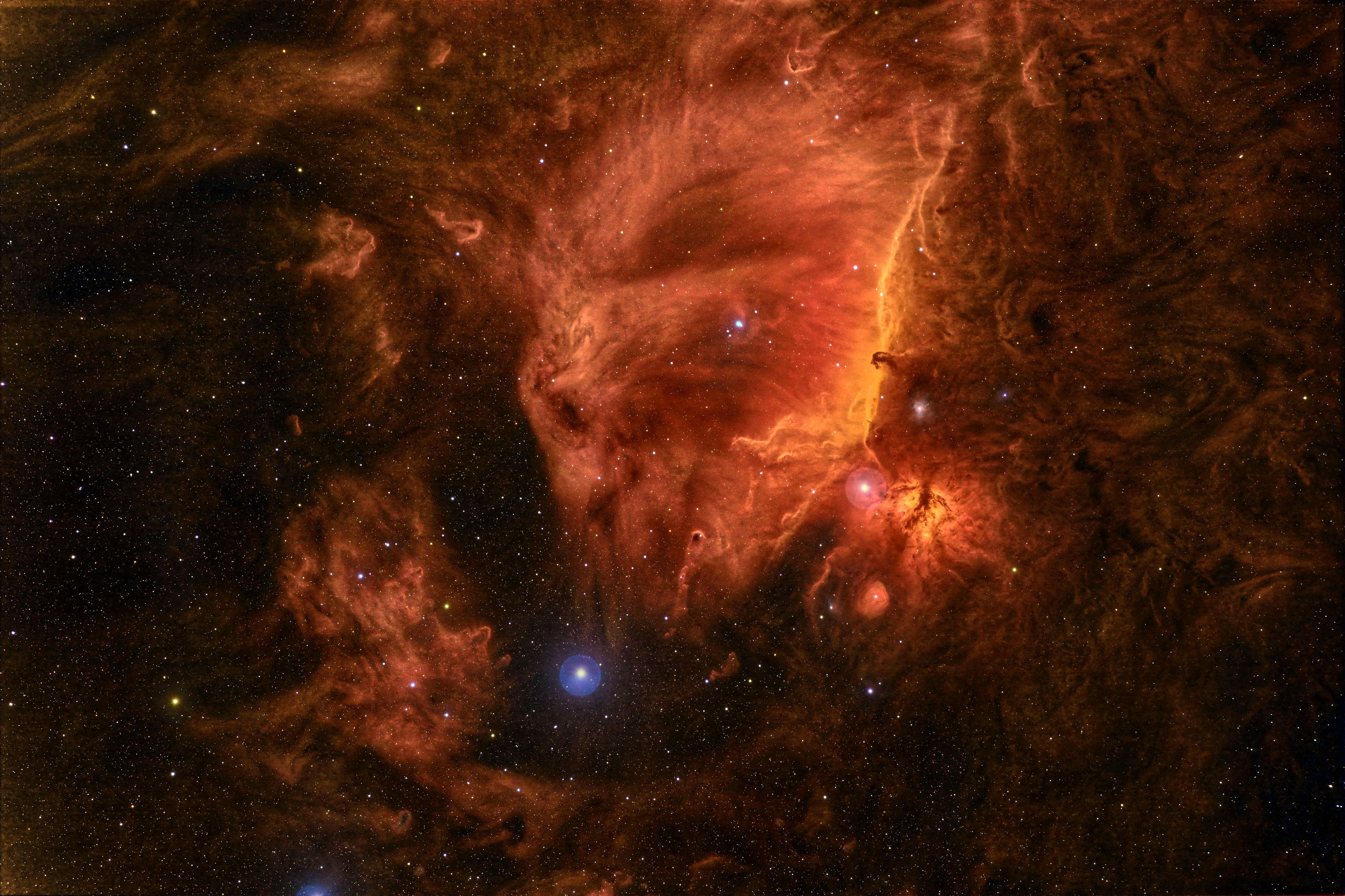 |
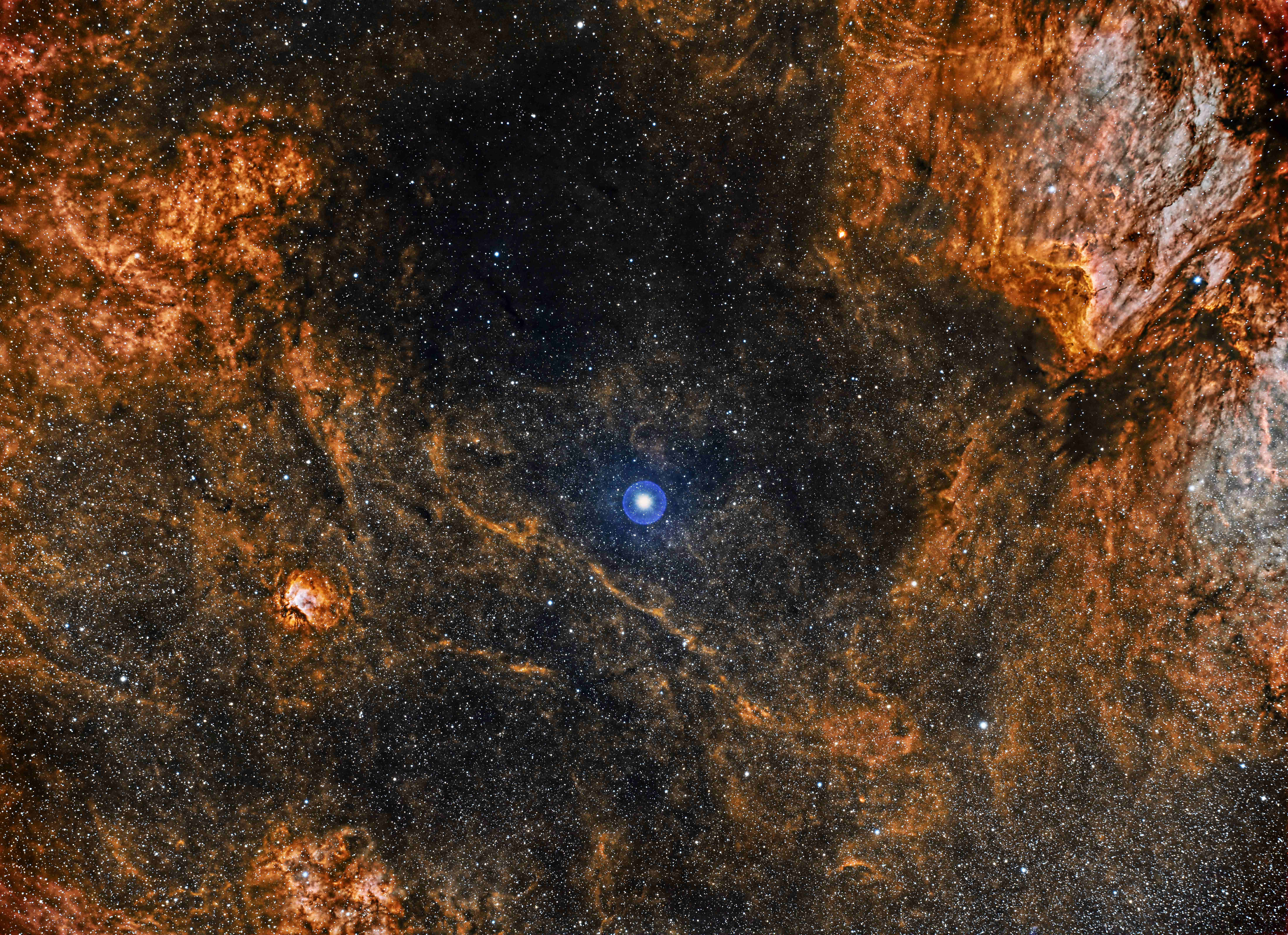 |
| LDN 1235 - The Shark Nebula The Shark Nebula resides in the constellation of Cepheus. Cepheus was the king of Aethiopia. He was married to Cassiopeia and was the father of Andromeda. This nebula is classified as both a dark nebula as well as a reflection nebula. There are two reflection nebulae - one just behind its head and the other at the base of its neck. Dark nebulae are very, very faint and can only be seen in long exposure images. Image processed by Ron Yelton, original data from Telescope Live |
IC 2177 - The Seagull Nebula This nebula lies right on the border of the constellation Canis Major (the Big Dog) and Monoceros (the Unicorn). It is an emission nebula. I processed this image in the HSO palette (Hydrogen alpha assigned to the red channel, sulphur to the green channel and oxygen to the blue channel. See the image to the right for another version of the same object. Image processed by Ron Yelton, original data from Telescope Live |
IC 2177 - The Seagull Nebula Here is a another version of the Seagull Nebula. This one was processed in the OHS palette (Oxygen assigned to the red channel, hydrogen alpha to the green channel and sulphur to the blue channel). There are 24 different possible combinations to choose from. Most of which come out in some really bizzare colors. The fun part for me is that different details emerge with every color combination. Image processed by Ron Yelton, original data from Telescope Live |
|
Location: IC Astronomy Observatory, Spain
Date: December 2023 Mount: Paramount MX+ Telescope: Takahashi FSQ-106ED (SPA-1) Camera: QHY600m CMOS @ -25c Exposure: 27 x 5 min (RGB) Total: 2 hrs 15 min |
Location: IC Astronomy Observatory, Spain
Date: December 2023 Mount: Paramount MX+ Telescope: Takahashi FSQ-106ED (SPA-1) Camera: QHY600m CMOS @ -25c Exposure: 76 x 5 min (HSO) Total: 6 hrs 20 min |
Location: IC Astronomy Observatory, Spain
Date: December 2023 Mount: Paramount MX+ Telescope: Takahashi FSQ-106ED (SPA-1) Camera: QHY600m CMOS @ -25c Exposure: 76 x 5 min (HSO) Total: 6 hrs 20 min |
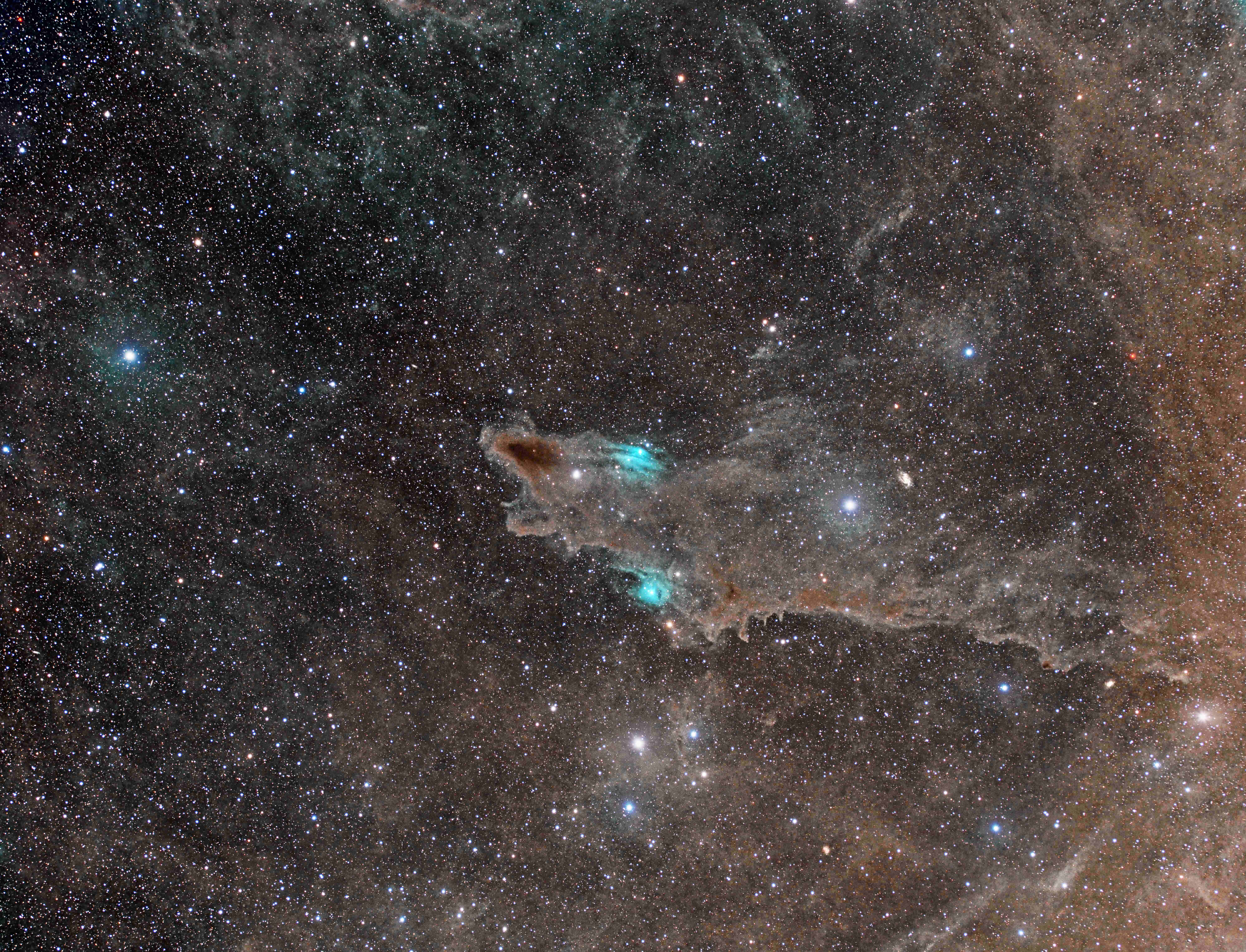 |
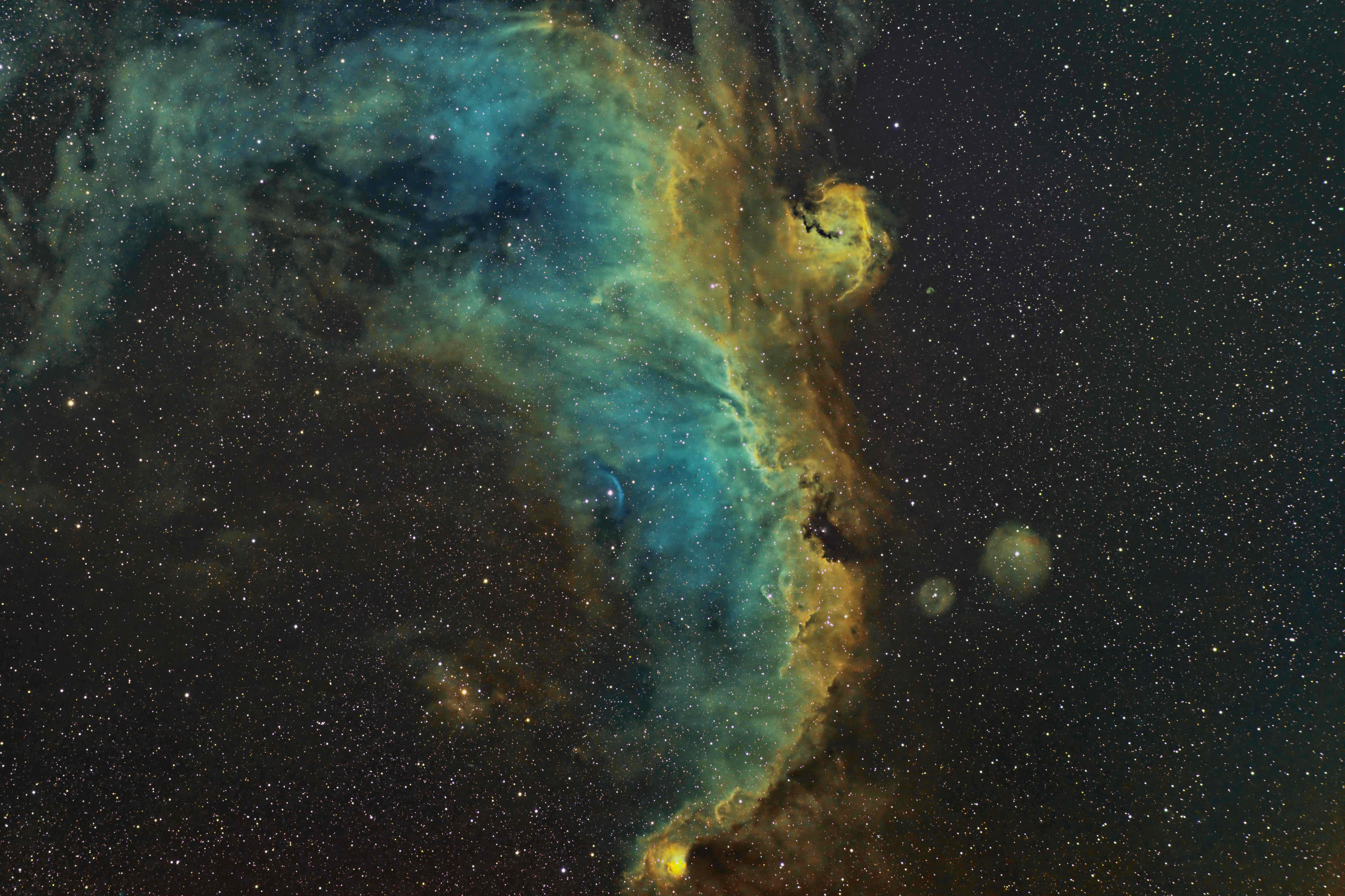 |
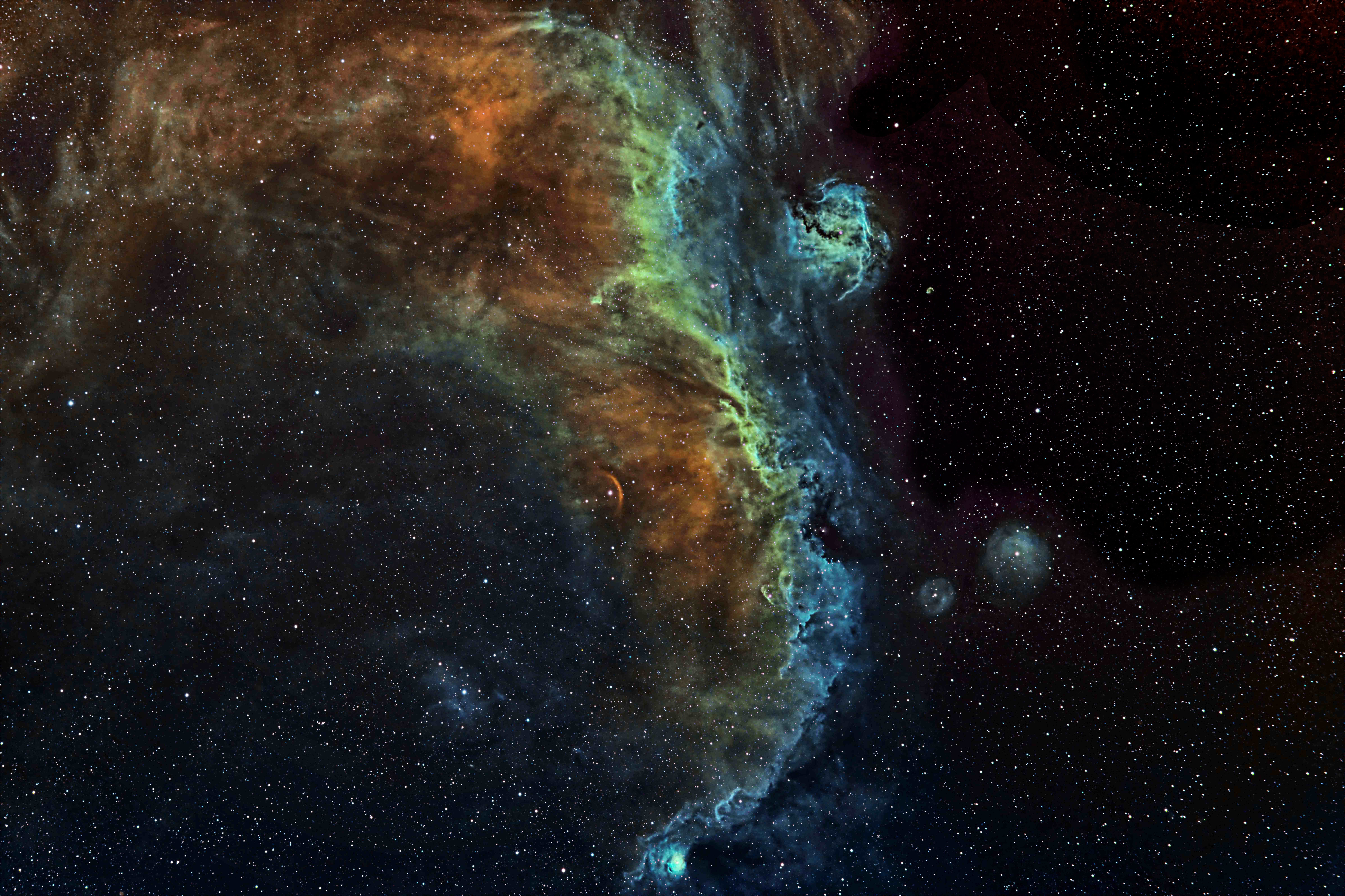 |
RCW 32
| NGC 2626 NGC 2626 is in the constellation Vela. Vela refers to the sail of Jason's ship, the Argo Navis, that Jason and the Argonauts sailed in to retrieve the Golden Fleece. There is certainly a lot going on in this nebula, which is a reflection, emission and absorption nebula. It has a a pulsar in its midst that is the brightest celestial source of gamma rays. It lies about 3300 light-years away. Image processed by Ron Yelton, original data from Telescope Live |
CG4 - God's Hand Known as God's Hand, this nebula is located about 1300 light-years from Earth in the constellation Puppis. Image processed by Ron Yelton, original data from Telescope Live |
RCW 32 Just about 3000 light-years from us, in the constellation Vela is this interesting nebula. It is an emission nebula that is part of a larger HII regon. Image processed by Ron Yelton, original data from Telescope Live |
|
Location: El
Sauce Observatory, Chile
Date: March 2023 Mount: Mathis MI-1000/1250 Telescope: Planewave CDK24 (CHI-1) Camera: QHY600m @-25c Exposure: 67 x 5 min for LRGB. Total: 5 hrs 35 min |
Location: El
Sauce Observatory, Chile
Date: November - December 2022 Mount: Mathis MI-1000/1250 Telescope: Planewave CDK24 (CHI-1) Camera: QHY600m @-25c Exposure: 80 x 10 min for HRGB. Total: 13 hrs 20 min |
Location: El Sauce
Observatory, Chile
Date: November - December 2022 Mount: Mathis MI-1000/1250 Telescope: Planewave CDK24 (CHI-1) Camera: QHY600m @-25c Exposure: 67 x 5 min for HRGB. Total: 5 hrs 35 min |
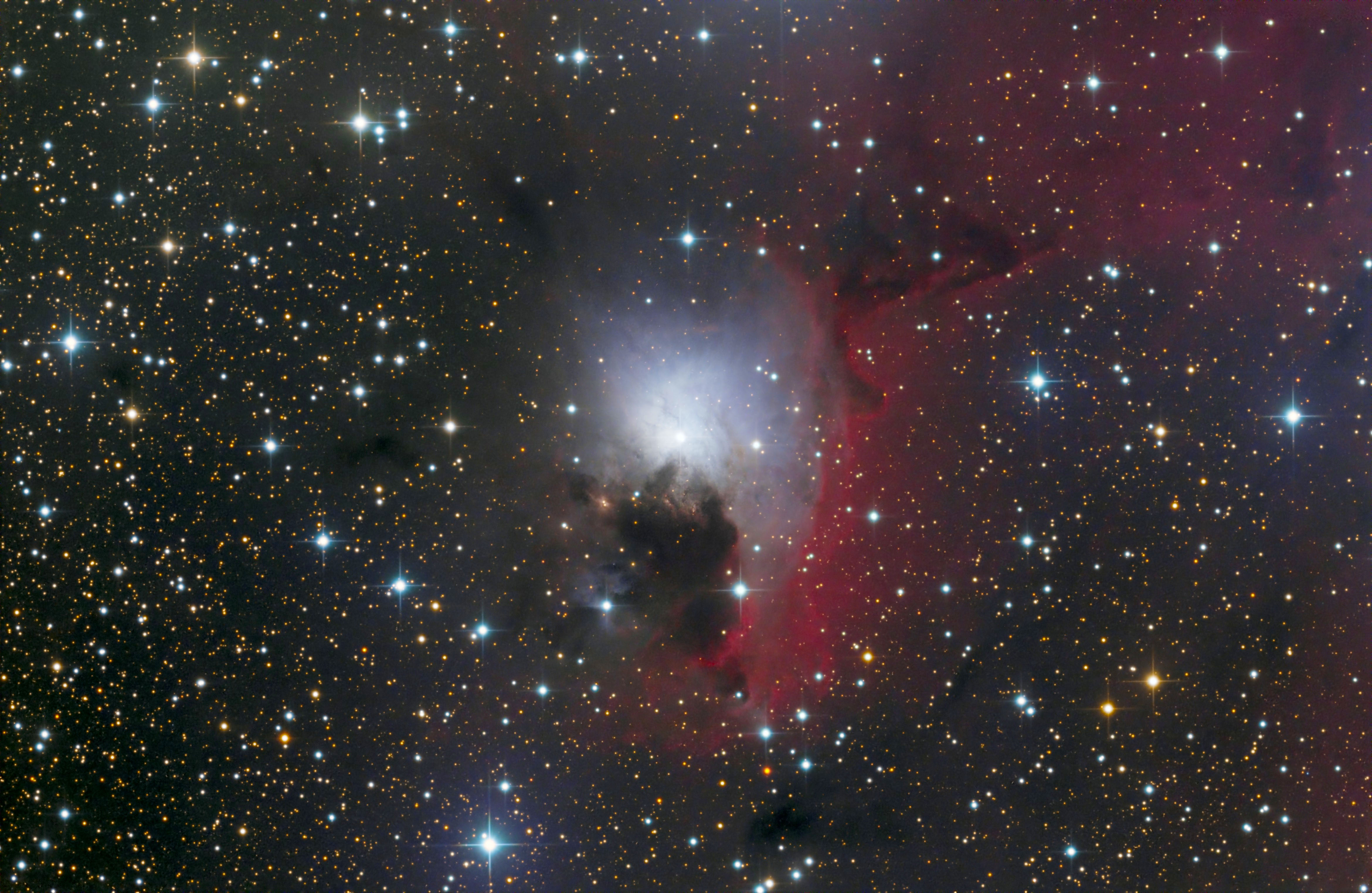 |
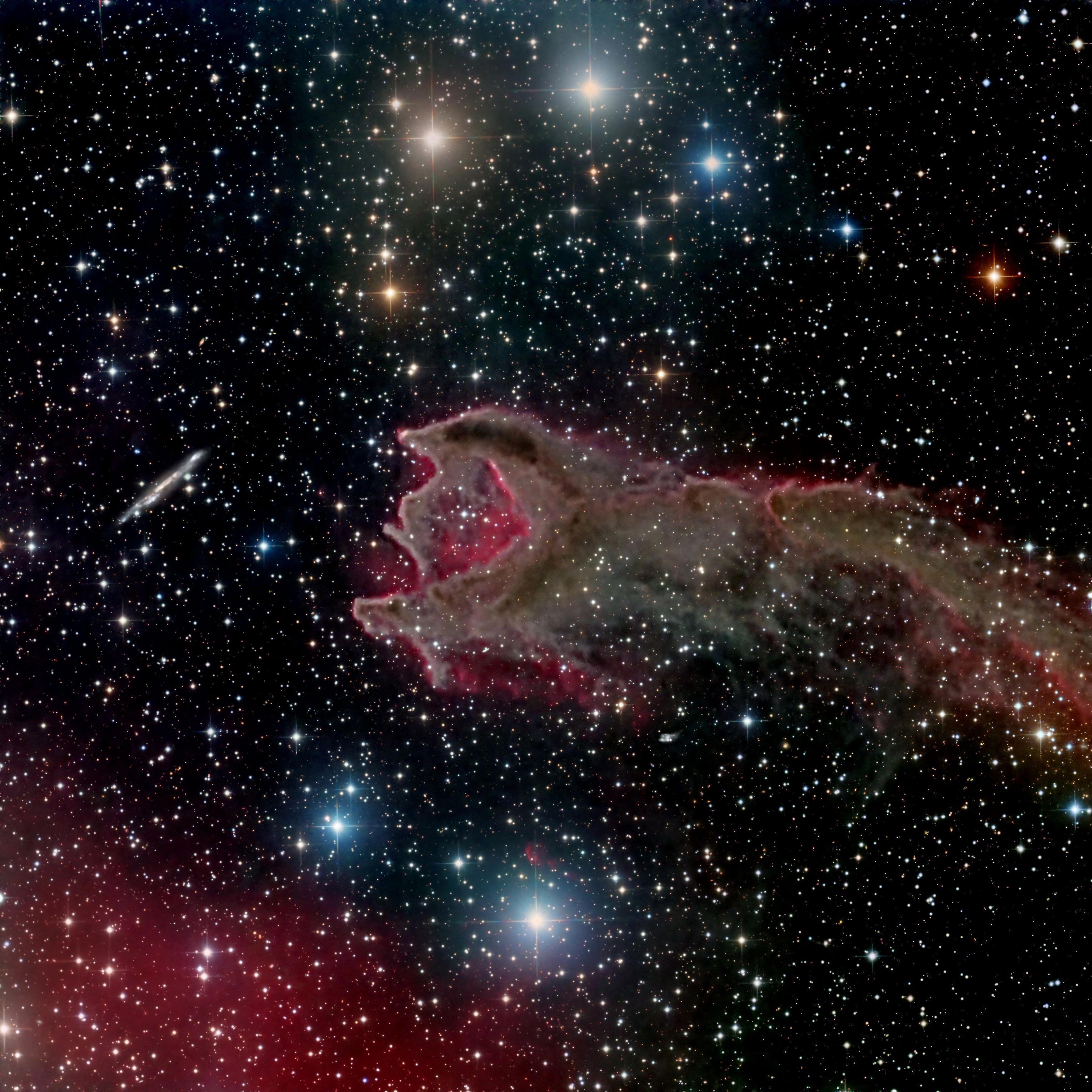 |
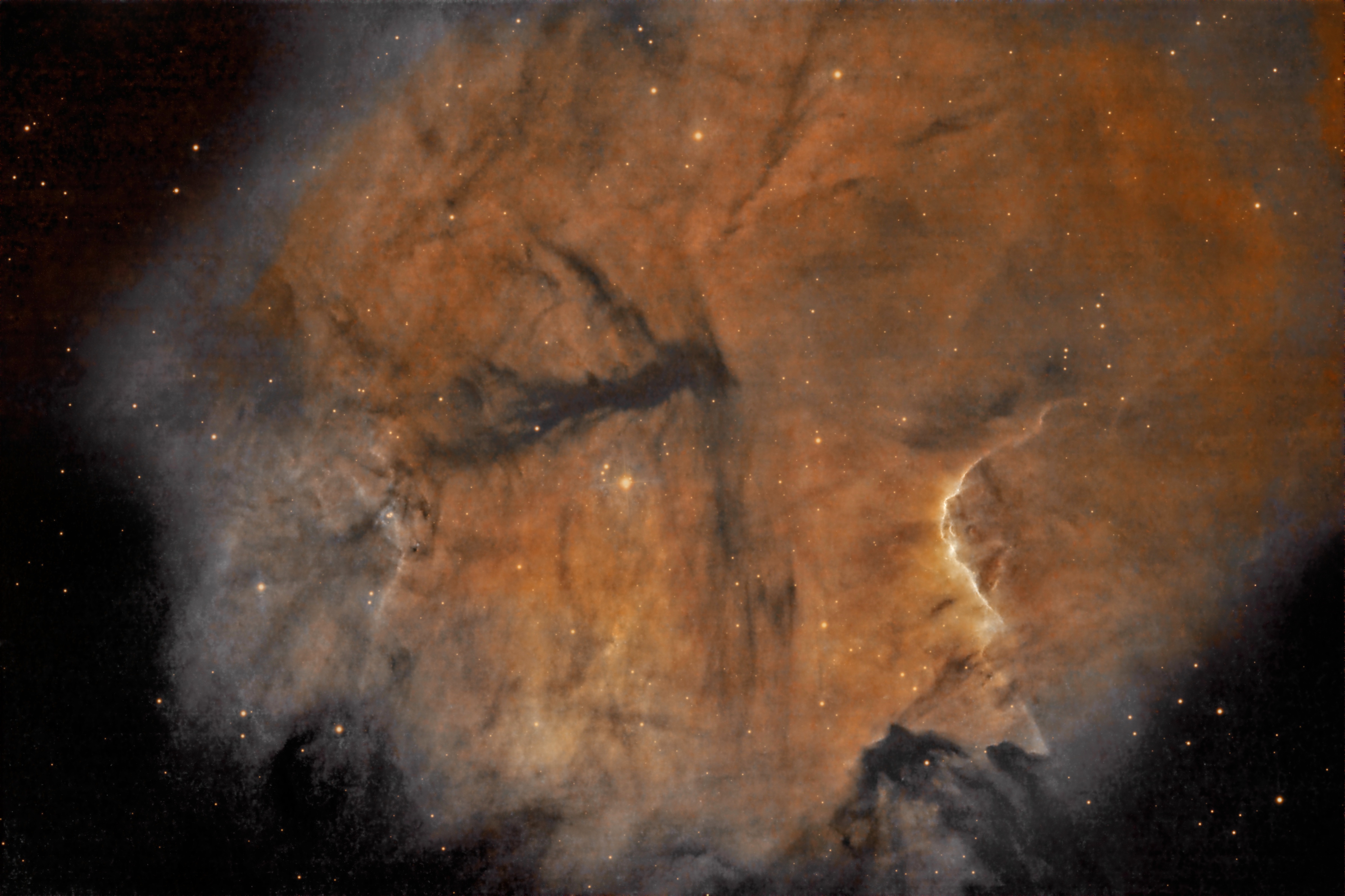 |
Except as noted all images Copyright © by Ron Yelton and may not be used without permission.